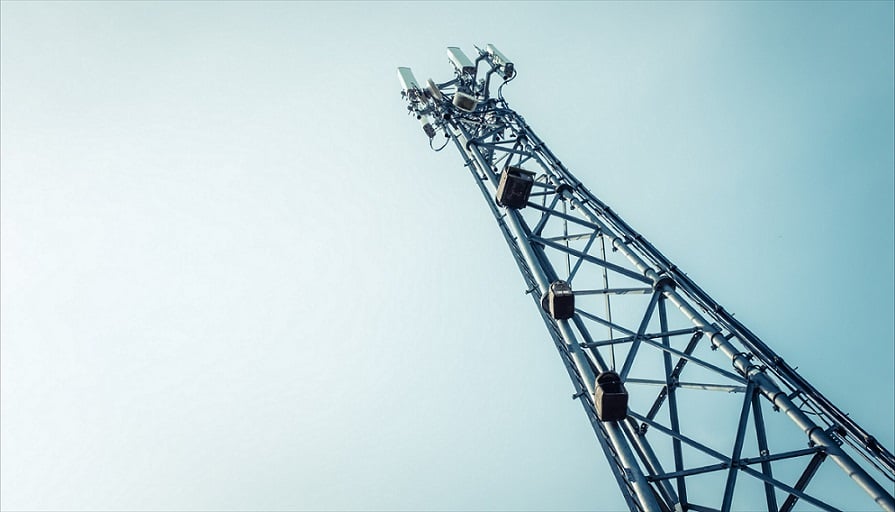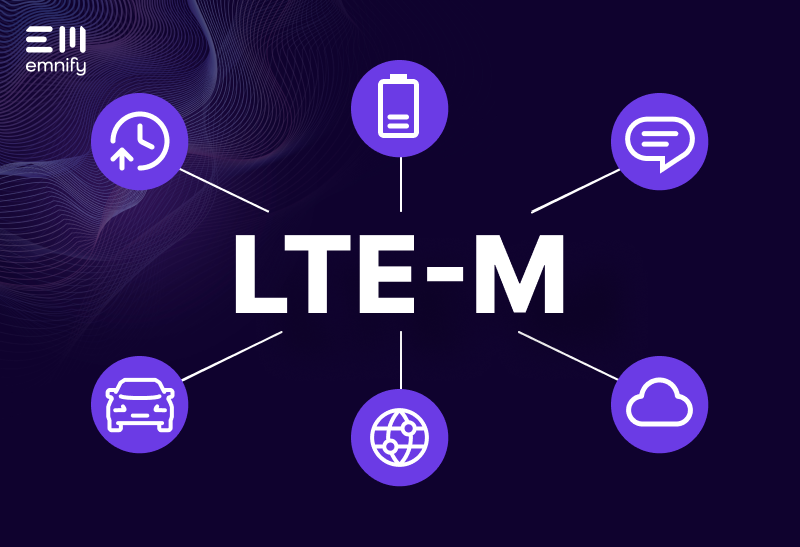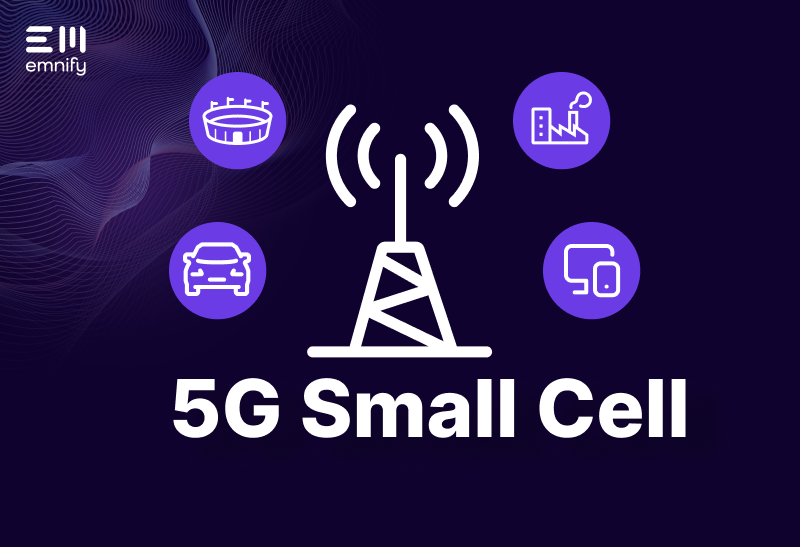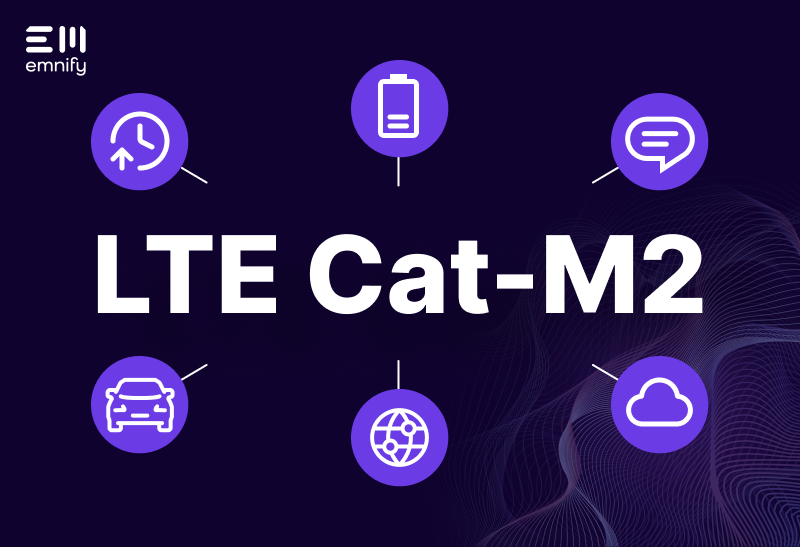

With 2G- and 3G phaseout accelerating globally, LTE-M and NB-IoT are positioned as future-proof alternatives for cellular IoT. Both technologies fall into Low Power Wide Area Network (LPWAN) category, bringing enhanced coverage, longer battery life, and reduced costs compared to previous cellular generations.
Having said that, LTE-M and NB-IoT are not created equal, and there are some distinct differences to look at when deciding between the two for your IoT solution. In general, you will find that LTE-M can address most if not all NB-IoT use cases, but it is not the other way around. In this blog, we dive into five technology implications to factor into your connectivity strategy.
|
|
LTE CAT M1 |
NB-IoT (NB1) |
|
Max. Data Rate |
Uplink: 1119 kbps Downlink: 588 kbps |
Uplink: 70 kbps Downlink: 32 kbps |
|
Latency |
Milliseconds |
Seconds |
|
Roaming |
Possible over legacy 4G networks |
Very limited |
|
Power Consumption |
Best for sending large messages |
Best for sending minimal data |
|
Mobility |
< 300 km/h, cell handover supported |
< 100 km/h, no cell handover |
|
SMS |
Supported |
Mostly not supported |
1. National and Global Roaming
Both LTE-M and NB-IoT are relatively new technologies where dedicated roaming agreements have not yet been widely in place among network operators. However, due to its technical configuration, LTE-M roaming is, in practice, possible over traditional 4G infrastructure.
For example, using emnify’s IoT SIM, LTE-M modems can piggyback on our existing national and global 4G roaming to get multi-network LTE-M access in 45 countries (as of March 2021). This brings two important benefits for IoT businesses:
- Improved coverage and service availability within a country
- Reduced complexity with a single SIM for cross-border network service
On the other hand, NB-IoT roaming largely depends on official agreements between network operators, which are still very limited. Multiple reasons come into play, one of which is that operators have yet to work out their NB-IoT charging model among each other. Also, features like Power Save Mode (PSM) and Extended Discontinuous Reception (eDRX) have not been consistently deployed, causing roaming difficulty when, for example, a device moves from a network with PSM to one where PSM is not available.
Due to limited NB-IoT roaming, you likely need separate operator contracts and SIMs if devices are distributed globally and are bound to one operator’s service within each country.
2. Data Rate and Latency
LTE-M boasts the highest bandwidth and data rate of all existing LPWAN technologies, which is particularly relevant if you are looking for the flexibility to upgrade device capabilities along the line. The maximum data rate of LTE-M is higher than NB-IoT by orders of magnitude, making the former the only option for mission-critical applications that requires millisecond latency.
What’s more, even if a low data rate is sufficient for your use case today, will this change over the next few years as your IoT solution evolves and new customer requirements come into play? Changing the connectivity module, later on, is not only cost- and labor-intensive but also requires re-certification of devices.
Having a long-term view in terms of bandwidth requirement will help future-proof your solution with an informed connectivity decision.
3. Mobile Use Cases
When it comes to mobile use cases, the difference between LTE-M and NB-IoT lies in the cell handover support. Handover or handoff is a process where data transmission is seamlessly transferred from one cell to another while the device remains attached to the network.
As NB-IoT is not capable of handover, devices need to re-register to the network every time it moves to a new cell, consuming extra power and causing intermittent disconnections. Furthermore, cell reselection happens only after the device has been completely disconnected from the last cell location. As it moves further away from a cell tower, the device will increase transmission output power (Tx) until the connection is lost.
With excellent handover support, an LTE-M device can seamlessly switch to the new cell tower as soon as it is closer than the old one while staying attached to the network. For these reasons, LTE-M is far more power-efficient and thus the better choice for use cases like asset tracking or fleet management where devices are constantly on the move.
4. Power Consumption
A common misconception around the two cellular IoT technologies is that LTE-M consumes more power than NB-IoT. When looking at the power equation, the following factors are key:
- Transmission current (active mode)
- Sleep mode and idle mode current (with PSM and eDRX)
- Transmission time of each message (i.e. device wake-up time)
In dual modems, power usage during PSM and eDRX is almost the same between LTE-M and NB-IoT (see the below example of the Quectel B95 M3 module). Plus, while the average transmission current of LTE-M is slightly higher than NB-IoT, this is outweighed by the significant difference in transmission time. In general, reduced transmission time improves battery life as devices can faster fall back to sleep mode to save power.
When it comes to medium-sized messages like firmware updates, an NB-IoT transmission can last for minutes due to the low data rate, resulting in immense energy consumption. On the contrary, the higher bandwidth of LTE-M allows more data to be sent much faster, making it more power-efficient in medium-throughput applications.
|
|
LTE-M (CAT M1) |
NB-IoT (NB1) |
|
Data rate (uplink/downlink) |
1119 kbps / 588 kbps |
70 kbps / 32 kbps |
|
Power Save Mode |
3.9 μA |
3.9 μA |
|
DRX (discontinuous reception) |
1.65 mA |
1.56 mA |
|
eDRX cycle (81.92s) |
0.85 mA |
0.81 mA |
|
Active Mode |
202mA |
167mA |
Power Consumption Example: Quectel B95 M3 module
5. SMS Support
In IoT communication, SMS is often used for remote device configuration and reboot or getting specific device information. In certain scenarios, you might also need SMS for over-the-air SIM configuration.
According to GSMA, SMS is not included as a key minimum feature for NB-IoT, and very few operators have already deployed the technology with SMS support. On the other hand, there is a clear consensus that SMS will be deployed in global LTE-M deployments - consistently with legacy 4G networks. If SMS is integral to your use case, you are better off using an LTE-M or a duo modem.
To sum up, while many might be intrigued by the slightly better cost benefits of NB-IoT compared to LTE-M, this comes at the expense of other network functionalities. Eventually, it all boils down to your device requirements and use case in question. What’s more, given that both technologies are still under roll-out and not yet available in all countries, 2G fallback should be part of your IoT solution.
Get in touch with our IoT experts
Discover how emnify can help you grow your business and talk to one of our IoT consultants today!

Nhu Ho
Nhu has over six years of experience working with networking technologies and IoT connectivity solutions. She’s an avid tech learner with a customer-focused mindset.



